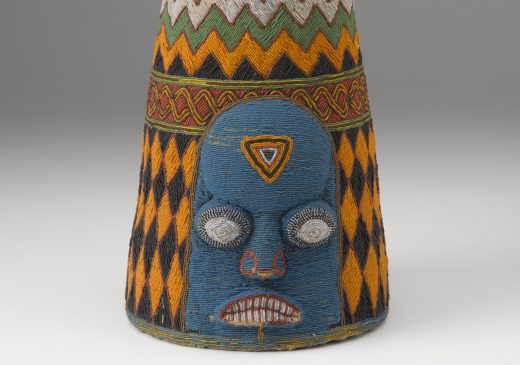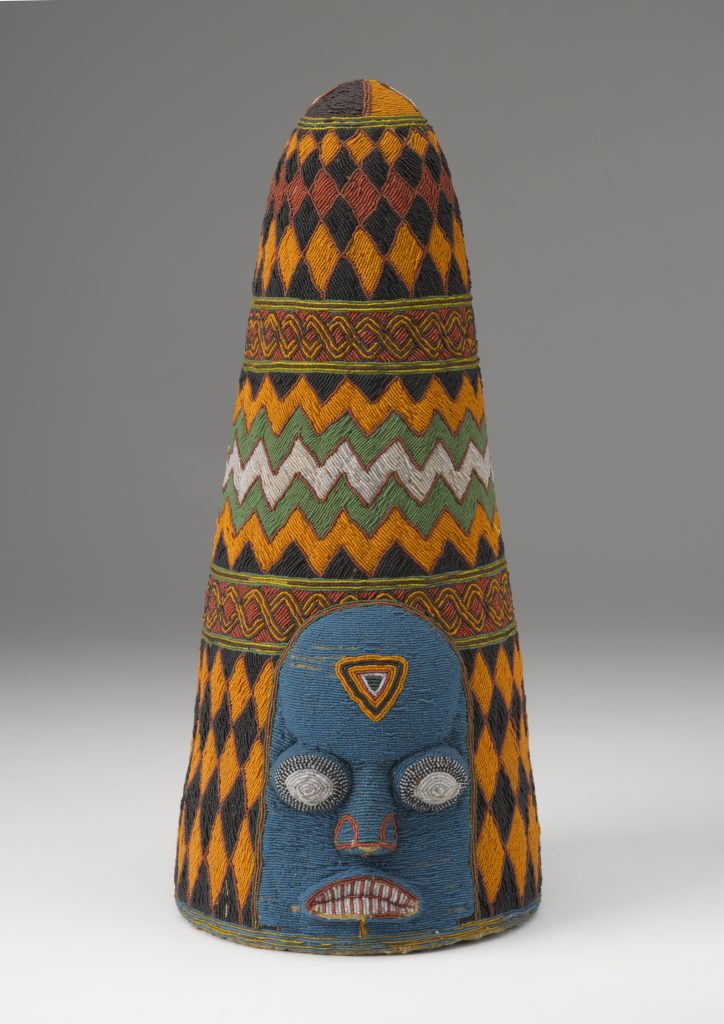Vocabulary
pattern
repeat
crown
bead
Materials
Assorted colors Railroad board “crown” backgrounds (pre-cut and assembled, about 9.5” wide by 17.5” tall, 1 per student, see PDF instructions below)
Assorted colors construction paper strips (pre-cut, about 9” long)
Oil pastels
Assorted colors construction paper scraps
Scissors
Nontoxic glue
Optional sample of beadwork (beaded belt, purse or other)
Globe or map to show the location of Africa
Large strips of paper with simple patterns on them to use during introduction to lesson
Extension Activities for Teachers
- Invite students to find patterns in classroom. Discuss how some clothing is worn for special occasions (like the crown) and some clothes are worn every day. Ask students if other things they wear could be considered art (jewelry, eyeglasses, hair clips). Why or why not?
Extension Activities for Families
- Look at family pictures of people in special clothing (a wedding dress, a prom tuxedo). Discuss clothing you wear for special occasions.
Suggested Books for Classroom Library
Brocket, Jane. Spotty, Stripy, Swirly: What Are Patterns? Millbrook, 2012. [ISBN 978-0-7613-4613-5]
Bryan, Ashley. Beautiful Blackbird. Simon/Atheneum, 2003. [ISBN 978-0-689-84731-8]
Chocolate, Deborah M. Newton. Kente Colors. Illustrations by John Ward. Walker, 1997,[ISBN 978-1-41312-866-6]
Ehlert, Lois. Feathers For Lunch. Harcourt, 1990. [ISBN 978-0-15-230550-5]
Ehlert, Lois. Lots of Spots. Simon/Beach Lane, 2010. [ISBN 973-1-44240-289-8]
Kuskowski, Alex. Super Simple African Art: Fun and Easy Art from Around the World. ABDO, 2012. [ISBN 973-1-61783-210-9]
Morris, Ann. Hats, Hats, Hats. Photographs by Ken Heyman. Lothrop, 1989. [ISBN 978-0-688-06338-2]
Pluckrose, Henry Arthur. Pattern. Childrens Press, 1995, 1994. [ISBN 973-0-329-56924-2]
Swinburne, Stephen R. Lots and Lots of Zebra Stripes: Patterns in Nature. Boyds Mills, 2001, 1998. [ISBN 978-0-329-59955-3]


